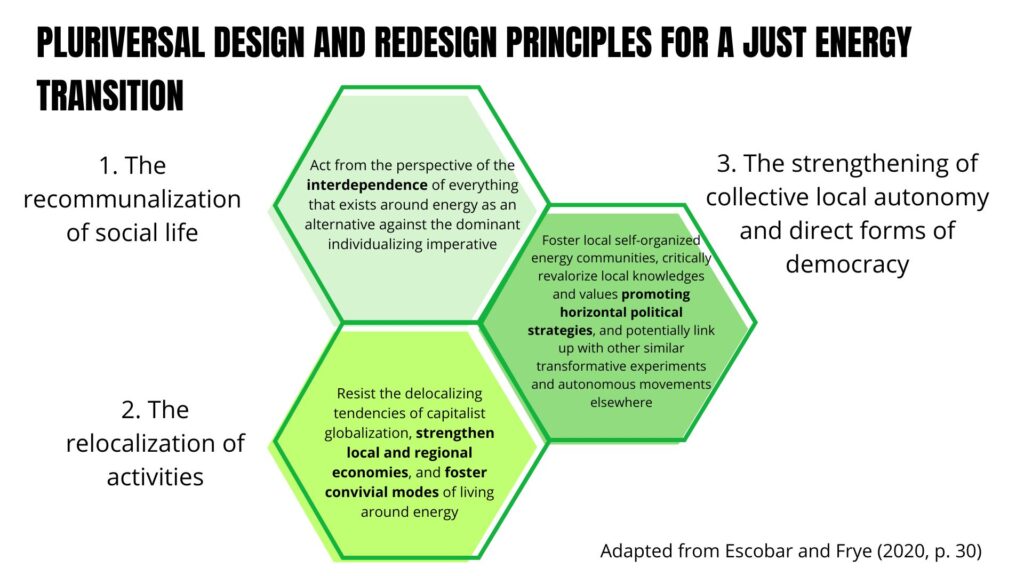This image was generated locally using the diffusion model Mitsua, trained from scratch using only public domain or copyright images with permission for use.
The energy transition, that is, the process of changing the technologies, means and systems around energy transformation from non-renewable sources to renewable ones, like solar and wind power, is imperative to reduce carbon emissions and environmental damage. The urgency of acting is tangible, considering the often consequences of climate change: the melting of the glaciers (Venezuela saw its last glacier disappear this year), the burning of woods around the world, and other disasters due to higher temperatures every year, which have marked 2023 as the hottest year since 1850, according to global records.
Considering that the current socioeconomic system relies heavily on energy transformation from fossil-fuel sources, namely oil and carbon, it seems crucial to carry out the full decarbonization of the global energy matrix. This endeavor is extensive and complex, taking into account the wide scope it has, since it must deem all the industrial and public sectors at different levels.
As complex as they are, transition processes involve different perspectives, cosmovisions, and understandings of the world. The definition of the possibilities to carry out these processes begging with a story. For example, the models and plans to define what are the most adequate paths to achieve the energy transition exist among academy, industry, and society’s imaginaries. The challenge to create a narrative that opens possibilities where the different perspectives align in a common ground may lead to contradictory situations. Nowadays, the energy transition is embedded in such situation, considering, for example, the requirement of enormous amounts of metals to achieve it, which imply an increase in mining activities whose consequences are not much different from those of fossil fuels.
The renewable energy artifacts required to produce the energy we consume nowadays from fossil fuels are made of metals, and their means of functioning rely on them as well. Consequently, the problem that surges from this topic is that there is an incoherence between the means we will use to pursue an energy transition and the main objective of the energy transition itself; which is to drive us away from global warming. Furthermore, the issue seems bigger if we consider that global warming and environmental crisis are not the only serious issue we are dealing with as a society, as the current social and inequality issues, along with political instability, need to be addressed as well, considering how these issues are intertwined.
The energy transition, as a technological one, “encompass ever larger aspects of the cultural, economic, and political life of moderns society”. However, technologies’ development are not the only implication. In general, the approach from the more technical areas, like engineering, stress deeply the importance of developing new technologies, often overlooking the necessity to consider other aspects, like how are those technologies to be developed and with what resources? Where do they come from? Who they impact and how?
Understanding that there is an urgency of moving forward, it is also a must to analyze these different angles to achieve an energy transition that is commensurate with the global situation of polycrisis around environment endangerment and rampant social inequality; in other words, a Just Energy Transition. Nevertheless, most of the stories around the energy transition fail in the attempt to create a narrative that opens possibilities where the different perspectives align in a common ground to make it just, leaving behind extractivist and neocolonial mechanisms and points of view.
The search towards a compelling story that sheds light on a Just Energy Transition pushed me to explore the application of theories that are rooted in social justice, energy sovereignty, horizontality, and strengthen of local economies. One of these is Pluriversality, which emphasizes that “in this world there must be a place for many worlds to coexist” (Mignolo, Escobar and Frye). I proposed, then, to apply the following Pluriversal design and redesign principles to analyze the possibility of a Just Energy Transition, specifically in Europe, considering the metals required for it.

How would you imagine these principles being used in the energy transition realm? How do you link them with the metals needed to build the enabling infrastructures of the renewable energy technologies?
This text is taken from the thesis document Mining Industry and Energy Transition Scenarios for Europe: Promoting a Pluriversal Approach elaborated by me during the TISE master’s program. The original text can be found here.

Leave a Reply